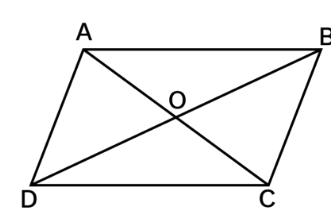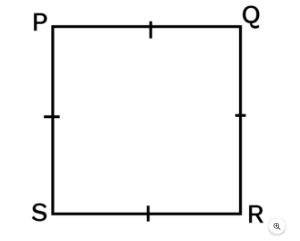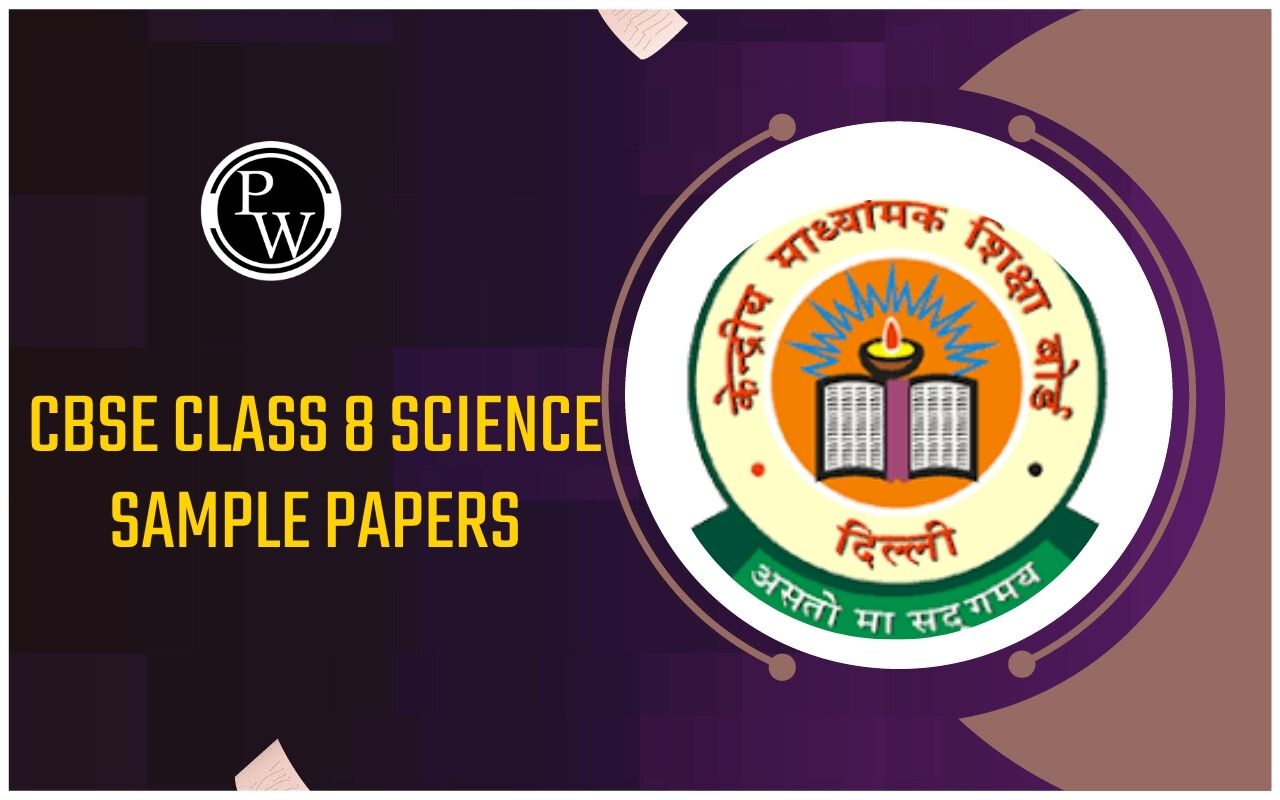
CBSE Class 8 Maths Notes Chapter 3: Chapter 3 of CBSE Class 8 Maths, "Understanding Quadrilaterals," focuses on the properties and classifications of quadrilaterals. It begins by defining polygons and moves on to various types of quadrilaterals, such as parallelograms, rectangles, rhombuses, and squares.
The chapter covers the properties of angles, sides, and diagonals of these shapes, including important theorems. Special emphasis is placed on convex and concave polygons and the sum of interior angles. By the end, students understand how to identify different quadrilaterals based on their properties and solve problems related to their angles and sides.CBSE Class 8 Maths Notes Chapter 3 Overview
Chapter 3 of CBSE Class 8 Maths, titled "Understanding Quadrilaterals," delves into the study of four-sided polygons and their properties. The chapter begins with an introduction to polygons, including their classification based on the number of sides. It further explores convex and concave polygons, emphasizing the difference between them. The primary focus of the chapter is on quadrilaterals, which are polygons with four sides. Students learn about various types of quadrilaterals such as parallelograms, rectangles, squares, rhombuses, and trapeziums, each with distinct properties related to their sides, angles, and diagonals. A significant part of the chapter is dedicated to understanding the sum of the interior and exterior angles of polygons, with the key formula being that the sum of the interior angles of a quadrilateral is always 360°.CBSE Class 8 Maths Notes Chapter 3 PDF Download
In this, students can classify quadrilaterals, understand their geometric properties, and solve related problems using angle sum properties and other key theorems. Hence, here we have provided CBSE Class 8 Maths Notes Chapter 3 Understanding Quadrilaterals pdf -CBSE Class 8 Maths Notes Chapter 3 PDF
CBSE Class 8 Maths Notes Chapter 3 Understanding Quadrilaterals
Here we have provided CBSE Class 8 Maths Notes Chapter 3 PDF - The fundamental ideas of quadrilaterals, various quadrilateral types and their properties, various curves, polygons, and some quadrilateral theorems—such as the angle sum property of quadrilaterals—will all be covered in detail in the class 8 chapter "Understanding Quadrilaterals."What are Quadrilaterals?
Quadrilaterals are one type of polygon which has four sides and four vertices and four angles along with 2 diagonals. There are various types of quadrilaterals.Types of Quadrilaterals
The classification of quadrilaterals are dependent on the nature of sides or angles of a quadrilateral and they are as follows:- Trapezium
- Kite
- Parallelogram
- Square
- Rectangle
- Rhombus
Revisiting Geometry
As is well known, geometry is a discipline of mathematics that examines various shapes, their characteristics, and the construction of lines, angles, and other polygons. Two basic categories for geometry are plane geometry (two dimensions) and solid geometry (three dimensions).Introduction to Curves
When multiple points are linked without removing the pencil from the paper or retracing any piece, a curve is the geometric form that results. Essentially, it's a line that doesn't have to be straight. The various types of curves are:- Open curve: An open curve is a curve in which there is no path from any of its point to the same point .
- Closed curve: A closed curve is a curve that forms a path from any of its point to the same point .
- A closed curve:

- An open curve:

- Simple open and closed curves:

Polygons
A polygon is a basic closed curve composed solely of line segments. Polygons come in many different forms, such as squares, rectangles, pentagons, etc. A polygon's sides do not intersect with one another.Classification of Polygons on the Basis of Number of Sides / Vertices
Polygons are categorised based on how many sides they have. The many polygon types are shown below according to how many sides they have:- When there are three sides, it is triangle
- When there are four sides, it is quadrilateral
- When there are fives sides, it is pentagon
- When there are six sides, it is hexagon
- When there are seven sides, it is heptagon
- When there are eight sides, it is octagon
- When there are nine sides, it is nonagon
- When there are ten sides, it is decagon
Diagonals
A polygon's diagonal is the section of a line that joins two of its non-consecutive vertices.Polygons on the Basis of Shape
Based on their shape, polygons can be categorised as convex or concave. A polygon that has at least one interior angle greater than 90 degrees is said to be concave. At least some of the diagonals of concave polygons are located in their exterior. Any polygon with all of its internal angles smaller than 180 degrees is said to be convex. Convex polygons don't have any diagonal segments on the outside.Polygons on the Basis of Regularity
On the basis of regularity, polygons can also be divided into regular and irregular types. A polygon is referred to as regular when it is both equilateral and equiangular. Every side and every angle in a regular polygon is equal. For instance: Square An irregular polygon is one that is not regular, that is, it is not equilateral or equiangular. Rectangle, for instanceAngle Sum Property of a Polygon
The angle sum property of a polygon states that the total of a polygon's internal angles is equal to (n-2)×180∘, where n is the polygon's side count. As we can see for the quadrilateral above, two triangles result from joining one of the diagonals. The total interior angles of the quadrilateral, or 360∘ = (4−2)×180∘, are equal to the sum of all the internal angles of the two triangles. Therefore, we can create (n – 2) non-overlapping triangles that will perfectly cover any polygon with n sides. The sum of the interior angles of the polygon will be equal to the sum of the interior angles of the triangles = ( n − 2 ) × 180 ∘Sum of Measures of Exterior Angles of a Polygon
The sum of the measures of the external angles of any polygon is 360 ∘ .Properties of Parallelograms
The following are the important properties of parallelogram:- The opposite sides of a parallelogram are equal and congruent.
- Diagonals of a parallelogram bisect each other.
- The diagonals of parallelogram bisect each other and produce two congruent triangles
- The opposite angles of a parallelogram are congruent.
Elements of a Parallelogram
- There are four sides and four angles in a parallelogram.
- The opposite sides and opposite angles of a parallelogram are equal .
- In the parallelogram ABCD, the sides ¯ ¯¯¯¯¯¯ ¯ A B and ¯ ¯¯¯¯¯¯¯ ¯ C D are opposite sides and the sides ¯ ¯¯¯¯¯¯ ¯ A B and ¯ ¯¯¯¯¯¯ ¯ B C are adjacent sides .
- Similarly, ∠ A B C and ∠ A D C are opposite angles and ∠ A B C and ∠ B C D are adjacent angles .
Angles of a Parallelogram
 The
opposite angles
of a parallelogram are
equal
.
In the parallelogram ABCD,
∠
A
B
C
=
∠
A
D
C
and
∠
D
A
B
=
∠
B
C
D
.
The
adjacent angles
in a parallelogram are
supplementary
.
∴
In the parallelogram ABCD,
∠
A
B
C
+
∠
B
C
D
=
∠
A
D
C
+
∠
D
A
B
=
180
∘
For example,
In the given parallelogram (RING), ∠R = 70°. Now, we have to find the remaining angles.
As we know, the opposite angles of a parallelogram are equal, we can write:
∠R = ∠N = 70°.
And we know, the adjacent angles of a parallelogram are supplementary, we get
∠R + ∠I = 180°
Hence, ∠I = 180° – 70° = 110°
Therefore, ∠I = ∠G = 110° [Since ∠I and ∠G are opposite angles]
Hence the angles of a parallelogram are ∠R = ∠N = 70° and ∠I = ∠G = 110°.
The
opposite angles
of a parallelogram are
equal
.
In the parallelogram ABCD,
∠
A
B
C
=
∠
A
D
C
and
∠
D
A
B
=
∠
B
C
D
.
The
adjacent angles
in a parallelogram are
supplementary
.
∴
In the parallelogram ABCD,
∠
A
B
C
+
∠
B
C
D
=
∠
A
D
C
+
∠
D
A
B
=
180
∘
For example,
In the given parallelogram (RING), ∠R = 70°. Now, we have to find the remaining angles.
As we know, the opposite angles of a parallelogram are equal, we can write:
∠R = ∠N = 70°.
And we know, the adjacent angles of a parallelogram are supplementary, we get
∠R + ∠I = 180°
Hence, ∠I = 180° – 70° = 110°
Therefore, ∠I = ∠G = 110° [Since ∠I and ∠G are opposite angles]
Hence the angles of a parallelogram are ∠R = ∠N = 70° and ∠I = ∠G = 110°.
Diagonals of a Parallelogram
At the point of intersection, a parallelogram's diagonals split apart. Given below is the parallelogram ABCD, where OA = OC and OB = OD. Consider an example, if OE = 4cm and HL is five more than PE, find the measure of OH. Given that, OE = 4 cm and hence, OP = 4cm [Since OE = OP] Hence PE =OE + OP = 4cm + 4cm = 8 cm Also given that, HL is 5 more than PE, Hence, HL = 5 + 8 = 13 cm. Therefore, OH = HL/2 = 13/2 = 6.5 cm Therefore, the measurement of OH is 6.5 cmProperties of Special Parallelograms
Rectangle
A rectangle is a parallelogram where all of the angles add up to 90 degrees.Properties -
A rectangle has equal and parallel opposite sides. A rectangle's diagonals are all the same length. A rectangle's internal angles are all equal to ninety degrees. At the intersection, the diagonals of a rectangle cut each other in half.Square
A square is a rectangle with equal sides . All the properties of a rectangle are also true for a square. In a square the diagonals: bisect one another
are of equal length
are perpendicular to one another
bisect one another
are of equal length
are perpendicular to one another
Rhombus
One of the unique instances of a parallelogram is a rhombus. Every side in a rhombus is equal, as are the sides that face each other.Benefits of CBSE Class 8 Maths Notes Chapter 3
The benefits of CBSE Class 8 Maths Notes for Chapter 3 Understanding Quadrilaterals are:Clear Conceptual Understanding : These notes simplify complex concepts related to quadrilaterals, helping students grasp the properties of various four-sided polygons easily.
Quick Revision : The notes provide a concise overview of the chapter, allowing students to revise quickly before exams or class tests.
Step-by-Step Explanation : Each type of quadrilateral, along with its properties (such as angles, sides, and diagonals), is explained systematically, aiding in better comprehension.
Problem-Solving Skills : By covering the angle sum property and key theorems, these notes enhance students' ability to solve geometry-related problems more efficiently.
Visual Learning : Diagrams and geometric representations of quadrilaterals help in visualizing the concepts, making it easier to understand and remember.
Exam-Oriented Preparation : These notes are aligned with the CBSE syllabus, focusing on important topics, ensuring that students are well-prepared for exams.
CBSE Class 8 Maths Notes Chapter 3 FAQs
What is quadrilateral class 8 answer?
What is the important formula of understanding quadrilaterals Class 8?
Why is it called quadrilateral?
What type of quadrilateral has all sides equal?









